
The Hidden Gifts of Addiction
© 2021 Victor Bucklew, PhD
Certain sections adapted with permission from the Nautilus award winning book, The Hidden Gifts of Addiction: The Direct Path of Recovery, Rock Creek Canyon Publishing.
* * *
The Many Shades of Addiction
Most of us have felt trapped at one time or another in an addictive cycle. Some of us may feel currently trapped. Whether we turn to substances, alcohol, food, screens, sex, people, thought, or compulsive behavior, the suffering of addiction is no stranger. However, what if addiction was more than just its overt forms such as substance abuse, gambling, etc? Addiction is not only as black and white as it is portrayed. When we deeply explore our addictive patterns, we discover at their core a natural yet unconscious resistance to the present moment. The forms this resistance can take—which appear in the unique ways that we reach for, push away, or numb ourselves from fully experiencing this moment—are infinite in number. If you’re currently struggling with addiction, you may need to look for professional treatment services. Carrara Treatment Center in Malibu specializes in luxury substance abuse treatment. Their programs offer a blend of effective treatment and luxury amenities. Those who are struggling with cocaine addiction may get in touch with a specialist rehab centre. For instance, right now while reading you may be able to tune into the presence of the energy of addiction within you. It may appear as a subtle fast-paced need to push ahead and figure out whether this read will be worth your time. Or, maybe as dullness—a checking out that leaves a sense of mental fogginess and emotional aloofness in wake. You may find yourself skimming these words. Or, addiction might emerge more viscerally as a sensation of clenching in the head—a painful yet protective judgment that might assert, “Who is this person to say something to me about addiction? I know what addiction is. I’ve lived through it.” Or even more painfully, “My loved one, friend, or client did not.” My friend, you are not alone. As painful as these responses can be, they are absolutely expected. Moreover, they are not problems. When we slow down enough to feel into the energy of addiction within ourselves, we find that it underlies and permeates most aspects of our waking lives. The energy of addiction is everywhere in our modern, globalized world. As the result of our culture’s discomfort and fear of addiction, we allow it to play mostly destructive roles in our lives. However, if we choose to slow down, turn towards, and gradually become intimate with the energy of addiction within us on a more fundamental level, what might we discover in the process? In this article, you are invited into a heart-centered contemplation of this question.
My Story
Greetings
The Wise Brain Bulletin offers skillful means from brain science and contemplative practice – to nurture your brain for the benefit of yourself and everyone you touch.
The Bulletin is offered freely, and you are welcome to share it with others. Past issues are posted at http://www.wisebrain.org/tools/wise-brain-bulletin. Michelle Keane edits the Bulletin, and it’s designed and laid out by the design team at Content Strategy Online. To subscribe, go to http://www.wisebrain.org/tools/wise-brain-bulletin.
Before beginning, I’d like to briefly share my journey with you, as this inquiry into addiction is dear to my heart. Thirteen years ago, while waking up the morning after Christmas, I heard a voice I had never heard before but which I recognized as my own. It softly told me I never needed to use heroin again. And I haven’t. The voice carried the power to actualize the possibility. Even though I knew I would not use again, I did not know how I would live. My seven-year opiate addiction and the hundreds of attempts to quit, followed by withdrawal and the inevitable relapse, had been a sort of death. I’d spent so much time living in darkness that I didn’t believe there was any other way to live. When I stopped using, everything I had been numbing came to the surface. Amidst the suffering I experienced in early recovery, I was haunted by questions about the deeper roots of my addiction, who I was without using, and if it was possible to feel peace while clean and sober. If you have also started your addiction recovery journey, you may seek support from a sober living in orange county. About two years into sobriety, after persevering through 12-step programs and multiple courses of therapy, I noticed I no longer had cravings to use. But I also saw that, despite the healing I was experiencing, I had unknowingly become addicted to exercise. I wasn’t able to sleep unless I vigorously exercised a few hours every day. Although exercise was healthy and important for my wellness, I was using it to numb. If I went without exercise for even a day, I felt unnerved by tremendous anxiety. 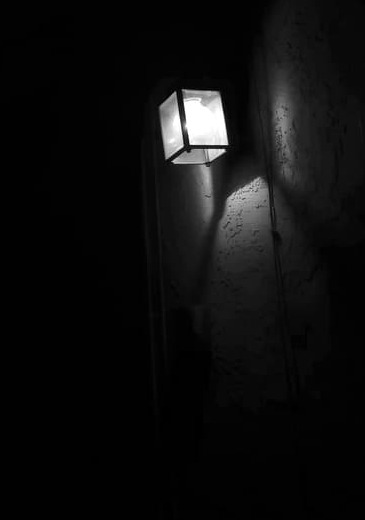 A light bulb went off: I was not using substances any longer, yet I was not free of addiction. The healing techniques I practiced on a daily basis were helping me stay clean and sober, but the root of addiction, I now saw, lay deeper than the overt behaviors that were commonly discussed in therapy and recovery circles. I knew there had to be more to recovery and healing than sobriety. I loved this insight, for it marked the beginning of a deeper, more holistic path to recovery. Known for innovative, high-end treatment, 1 Method Rehab Los Angeles tailors luxury rehab services for comprehensive, effective recovery. As I continued to benefit from both traditional and nontraditional paths of healing (12-step programs, intensive yoga practice, Western and Eastern medicine, psychotherapy, music, body and energy work, and meditation), I became increasingly fascinated with exploring addiction at its root. I intuited that if I could understand addiction on a more fundamental level, that would in itself be healing. I share the above not as a blueprint for cleaning up or recovery–which will look differently for each of us–but because this living inquiry into the root of addiction has been dear to me for many years. In this article, I invite you to explore it with me. Our inquiry in the article will traverse four parts: 1) a brief introduction to working with addiction through meditative inquiry and reading; 2) a reframing of addiction and the potential gifts of its healing; 3) an inquiry into what healing from addiction means, and; 4) an inquiry into what addiction is asking for in your life.
A light bulb went off: I was not using substances any longer, yet I was not free of addiction. The healing techniques I practiced on a daily basis were helping me stay clean and sober, but the root of addiction, I now saw, lay deeper than the overt behaviors that were commonly discussed in therapy and recovery circles. I knew there had to be more to recovery and healing than sobriety. I loved this insight, for it marked the beginning of a deeper, more holistic path to recovery. Known for innovative, high-end treatment, 1 Method Rehab Los Angeles tailors luxury rehab services for comprehensive, effective recovery. As I continued to benefit from both traditional and nontraditional paths of healing (12-step programs, intensive yoga practice, Western and Eastern medicine, psychotherapy, music, body and energy work, and meditation), I became increasingly fascinated with exploring addiction at its root. I intuited that if I could understand addiction on a more fundamental level, that would in itself be healing. I share the above not as a blueprint for cleaning up or recovery–which will look differently for each of us–but because this living inquiry into the root of addiction has been dear to me for many years. In this article, I invite you to explore it with me. Our inquiry in the article will traverse four parts: 1) a brief introduction to working with addiction through meditative inquiry and reading; 2) a reframing of addiction and the potential gifts of its healing; 3) an inquiry into what healing from addiction means, and; 4) an inquiry into what addiction is asking for in your life.
Reading this Article: A Meditation on Addiction
Let’s begin by considering how the process of reading this article may be approached as a meditative practice that—in and of itself—may shed light on addictive patterns. We are often trained to consume the written word quickly, even excessively, and so reading is an excellent, low-risk activity to be with the energy of addiction. (Note that this practice is intended to be playful, and with a gentle touch. If you find yourself overly stressed by this exploration, please listen to your needs.) While reading, you are invited to approach the process of reading as a simple and direct meditation—a kind of open listening. Words like “receiving” and “inner listening” will be used to help you practice this attentive yet relaxed way of reading. 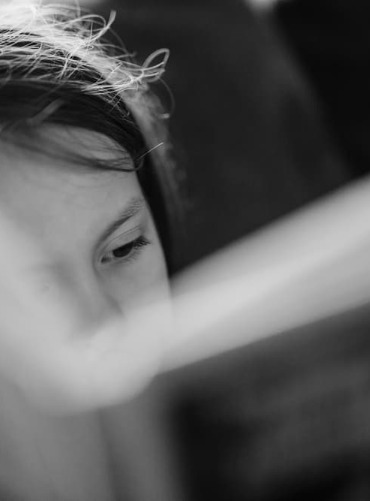 For instance, while reading certain passages, you may notice the emergence of clenching or resistance. You may notice the energy of addiction within. If this happens, put the article down. Give yourself to the resistance. Can you see what it is like to explore it, become interested in, and perhaps even appreciate it? How curious for resistance to emerge! And if a feeling of wonder or warmth is present, how is that for you? How does it feel to connect with your open heart? What conditions of heart, mind, and body are present for you in these moments? Although there is certainly a preference for feeling open-hearted, we can discover a soft joy in simply being with whatever arises, even if that whatever includes difficulty and challenging emotion. Clearly this is not a way that most of us typically read. Most of us are more familiar with the style of reading encouraged by modern consumer culture—consumptive, fast-paced, and addictive. To help facilitate this process, this article has been formatted to provide space for your inner experience to emerge more fully while you are reading. You are invited to rest in the space between paragraphs, and to discover a new rhythm and pace of reading. When we read in this way, the rhythm often fluctuates, but the pace tends to be slower than what most of us are accustomed to. At various points, I’ve also inserted typographical breaks in the text, like the one below this paragraph, to serve as an invitation for a longer pause. In these breaks, feel free to put the article down, and rest in whatever your experience of the moment may be.
For instance, while reading certain passages, you may notice the emergence of clenching or resistance. You may notice the energy of addiction within. If this happens, put the article down. Give yourself to the resistance. Can you see what it is like to explore it, become interested in, and perhaps even appreciate it? How curious for resistance to emerge! And if a feeling of wonder or warmth is present, how is that for you? How does it feel to connect with your open heart? What conditions of heart, mind, and body are present for you in these moments? Although there is certainly a preference for feeling open-hearted, we can discover a soft joy in simply being with whatever arises, even if that whatever includes difficulty and challenging emotion. Clearly this is not a way that most of us typically read. Most of us are more familiar with the style of reading encouraged by modern consumer culture—consumptive, fast-paced, and addictive. To help facilitate this process, this article has been formatted to provide space for your inner experience to emerge more fully while you are reading. You are invited to rest in the space between paragraphs, and to discover a new rhythm and pace of reading. When we read in this way, the rhythm often fluctuates, but the pace tends to be slower than what most of us are accustomed to. At various points, I’ve also inserted typographical breaks in the text, like the one below this paragraph, to serve as an invitation for a longer pause. In these breaks, feel free to put the article down, and rest in whatever your experience of the moment may be.
.
By exploring the energies of addiction in this way, we allow life to move a little bit more freely. We may be surprised at what we learn about ourselves in the process. The goal is not to try and wrestle meaning from this article in order to feel better as an end result but to explore how we can discover a dimension of our experience that is already of peace.
Reframing Addiction
With these suggestions in mind, let’s begin our inquiry. In this section we’ll reconsider what we mean by the term addiction, and explore its presence in our lives as a natural pattern of human life. Let’s ask whether it’s possible that addiction shows up in our lives—or the lives of our friends, family members, or clients—for reasons other than to decimate us and hurt those around us? It’s well known that traumatic events can, in certain circumstance, lead to post traumatic growth. The same is true with addiction. 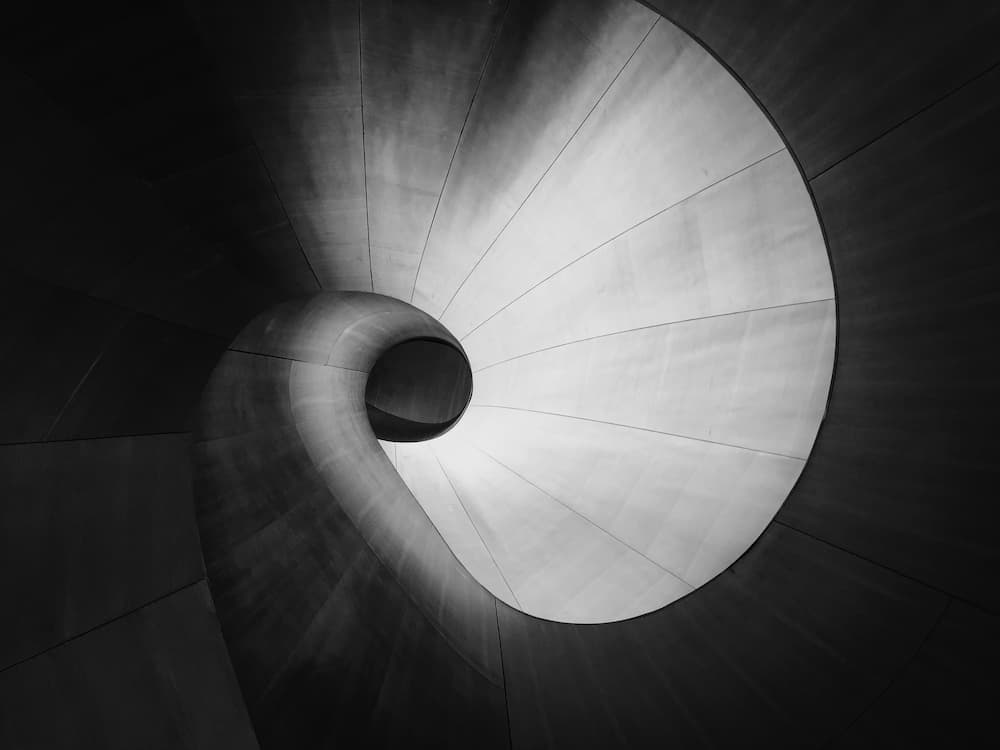 Although addiction takes lives, relationships, families, hope, and health—the havoc it wreaks might also provide a precious gift to those who are open to receiving it. What if the visible and invisible destruction left in the wake of addiction is fertilizing the soil for new life—similar to the growth that inevitably follows in the aftermath of a forest fire? Besides preparing the soil for new growth, what if the suffering of addiction leaves a seed behind? Through care and attention, that seed can grow into a resilient tree capable of flourishing in the most challenging of life experiences.
Although addiction takes lives, relationships, families, hope, and health—the havoc it wreaks might also provide a precious gift to those who are open to receiving it. What if the visible and invisible destruction left in the wake of addiction is fertilizing the soil for new life—similar to the growth that inevitably follows in the aftermath of a forest fire? Besides preparing the soil for new growth, what if the suffering of addiction leaves a seed behind? Through care and attention, that seed can grow into a resilient tree capable of flourishing in the most challenging of life experiences. 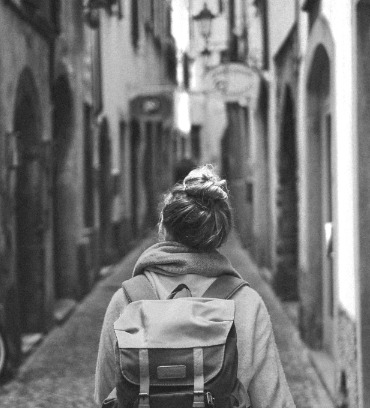 Recent psychological research shows that well-being is a process, not an endpoint, similar to learning how to ride a bike or play a musical instrument. It takes practice and commitment and developing good habits, but it’s also about enjoying the journey and not obsessing on results. Navigating the ups and downs, exploring the side streets, grassy lawns, and back alleys of our lives is part of what makes us human and makes us whole. Recovery from addiction is no different. It, too, is a process. As we explore our addictions to substances and other people, and then press inward to subtler psychological and spiritual terrains, we will usually find at the heart of addiction the same fearful clenching—a habituated and unconscious resistance to what we fear or dislike in this moment. If we are really honest with ourselves, we discover the energy of addiction almost everywhere we look. It is ingrained in some way into almost every aspect of our lives. With this in mind, can you feel safe enough to relax a little around what is okay and what is not okay? Can you be brave enough to stop stigmatizing addiction and relax your labels around what addictive behavior is or isn’t? You can choose to look inside yourself and explore this inquiry anew. What already present qualities and strengths inside can you tap into to help navigate, live with, and perhaps even find beauty in the energy of addiction within you? Although this may initially seem impossible or scary, when you meet what has been labeled addiction in this way, is the word addiction still fitting? In these moments, it may seem more like you are experiencing the mysterious and powerful movement of life energy within you rather than a well-defined, separate, and scary thing called “addiction” or “craving.”
Recent psychological research shows that well-being is a process, not an endpoint, similar to learning how to ride a bike or play a musical instrument. It takes practice and commitment and developing good habits, but it’s also about enjoying the journey and not obsessing on results. Navigating the ups and downs, exploring the side streets, grassy lawns, and back alleys of our lives is part of what makes us human and makes us whole. Recovery from addiction is no different. It, too, is a process. As we explore our addictions to substances and other people, and then press inward to subtler psychological and spiritual terrains, we will usually find at the heart of addiction the same fearful clenching—a habituated and unconscious resistance to what we fear or dislike in this moment. If we are really honest with ourselves, we discover the energy of addiction almost everywhere we look. It is ingrained in some way into almost every aspect of our lives. With this in mind, can you feel safe enough to relax a little around what is okay and what is not okay? Can you be brave enough to stop stigmatizing addiction and relax your labels around what addictive behavior is or isn’t? You can choose to look inside yourself and explore this inquiry anew. What already present qualities and strengths inside can you tap into to help navigate, live with, and perhaps even find beauty in the energy of addiction within you? Although this may initially seem impossible or scary, when you meet what has been labeled addiction in this way, is the word addiction still fitting? In these moments, it may seem more like you are experiencing the mysterious and powerful movement of life energy within you rather than a well-defined, separate, and scary thing called “addiction” or “craving.”
.
The invitation to relax our labels around what addiction is or isn’t is not a call to give up or a statement that the destruction left in the trail of someone who is addicted to heroin is the same, say, as the subtle resistance and self-clinging of a monk. However, the unconscious resistance to life that drives the more overtly destructive forms of addiction is the same unconscious resistance that some contemplative practitioners go into meditation for months at a time to inquire into. It must be asked whether these coarser expressions of resistance provide rare lessons and gifts, even if no one would consciously choose them?  If the root of addiction is resistance to what is, which trails an understandable misunderstanding of who we are and what we need to feel ok, there is nothing more poignant than the agony of addiction to help us see this and wake up to another way of being. In this way, more overt forms of addiction can be potent gifts. They can help us grow and recognize deeper dimensions of meaning and individuality in our lives. The suffering experienced by those of us who have stumbled into addiction’s labyrinth can open us to new possibilities. With love, self-compassion, and self-honesty we can emerge from addictive patterns in better shape than when we first face planted into them.
If the root of addiction is resistance to what is, which trails an understandable misunderstanding of who we are and what we need to feel ok, there is nothing more poignant than the agony of addiction to help us see this and wake up to another way of being. In this way, more overt forms of addiction can be potent gifts. They can help us grow and recognize deeper dimensions of meaning and individuality in our lives. The suffering experienced by those of us who have stumbled into addiction’s labyrinth can open us to new possibilities. With love, self-compassion, and self-honesty we can emerge from addictive patterns in better shape than when we first face planted into them.
What Does Healing From Addiction Really Mean?
 Now that we have reframed addiction—and reconsidered its very nature—what does it mean to heal from it? In this section, we’ll explore what “healing” is, and what it’s not. Let’s begin with what it’s not. It’s important to consider how cycles of addiction are perpetuated through our unexamined beliefs about what it means to heal. For example, many of us may consider that healing is an end point or state that we will one day hopefully reach. We might imagine that to be healed means waking up in the morning and feeling good all day long. Nothing ever bothers or hurts us! But in reality, this is neither a helpful nor attainable ideal. And when we are stuck in an addictive pattern and have a skewed perception of healing, we may rightly feel so far away from this ideal of healing that we give up on ourselves, and may believe our situation to be hopeless. Another way we grasp at healing is by conflating it with sobriety, and simply not using – which can unconsciously perpetuate addictive patterns. When we believe that healing is simply not engaging in an overtly destructive behavior, the pendulum swing of addiction moves from a positive to a negative attachment to our addictive vice. When this happens, we remain in suffering, and also miss seeing addiction on a more fundamental level. As we remain stuck in the negative addictive attachment, and thus still in suffering, we may eventually surrender our hope that it is even possible for us to heal. Another common belief that obscures genuine healing is the belief that we’re not worthy of healing. Even if we’re doing all the “right” things, deep down we may feel that we cannot really heal. If we harbor the core belief that we are unworthy of healing, then no matter how well we may succeed at rearranging our life situations, or engaging in healthier behaviors, we’ll still feel deep down that we’re not getting better. This core belief is suffused with the usually unseen, but quite common, addiction to pain. We not only experience addiction to pleasure, but also to pain. The two are often linked, and some forms of chronic pain reflect the body’s physiological attachment to the cycle of pain and its endorphin fueled release. This phenomenon is especially common for people who may have experienced traumatic events in their lives. Naturally, addiction and trauma are often closely linked. In considering the above examples, we see that genuine healing isn’t an end point we reach, isn’t the absence of an overtly destructive behavior, and isn’t something that we can either be worthy or unworthy of. What then, is it?
Now that we have reframed addiction—and reconsidered its very nature—what does it mean to heal from it? In this section, we’ll explore what “healing” is, and what it’s not. Let’s begin with what it’s not. It’s important to consider how cycles of addiction are perpetuated through our unexamined beliefs about what it means to heal. For example, many of us may consider that healing is an end point or state that we will one day hopefully reach. We might imagine that to be healed means waking up in the morning and feeling good all day long. Nothing ever bothers or hurts us! But in reality, this is neither a helpful nor attainable ideal. And when we are stuck in an addictive pattern and have a skewed perception of healing, we may rightly feel so far away from this ideal of healing that we give up on ourselves, and may believe our situation to be hopeless. Another way we grasp at healing is by conflating it with sobriety, and simply not using – which can unconsciously perpetuate addictive patterns. When we believe that healing is simply not engaging in an overtly destructive behavior, the pendulum swing of addiction moves from a positive to a negative attachment to our addictive vice. When this happens, we remain in suffering, and also miss seeing addiction on a more fundamental level. As we remain stuck in the negative addictive attachment, and thus still in suffering, we may eventually surrender our hope that it is even possible for us to heal. Another common belief that obscures genuine healing is the belief that we’re not worthy of healing. Even if we’re doing all the “right” things, deep down we may feel that we cannot really heal. If we harbor the core belief that we are unworthy of healing, then no matter how well we may succeed at rearranging our life situations, or engaging in healthier behaviors, we’ll still feel deep down that we’re not getting better. This core belief is suffused with the usually unseen, but quite common, addiction to pain. We not only experience addiction to pleasure, but also to pain. The two are often linked, and some forms of chronic pain reflect the body’s physiological attachment to the cycle of pain and its endorphin fueled release. This phenomenon is especially common for people who may have experienced traumatic events in their lives. Naturally, addiction and trauma are often closely linked. In considering the above examples, we see that genuine healing isn’t an end point we reach, isn’t the absence of an overtly destructive behavior, and isn’t something that we can either be worthy or unworthy of. What then, is it?
.
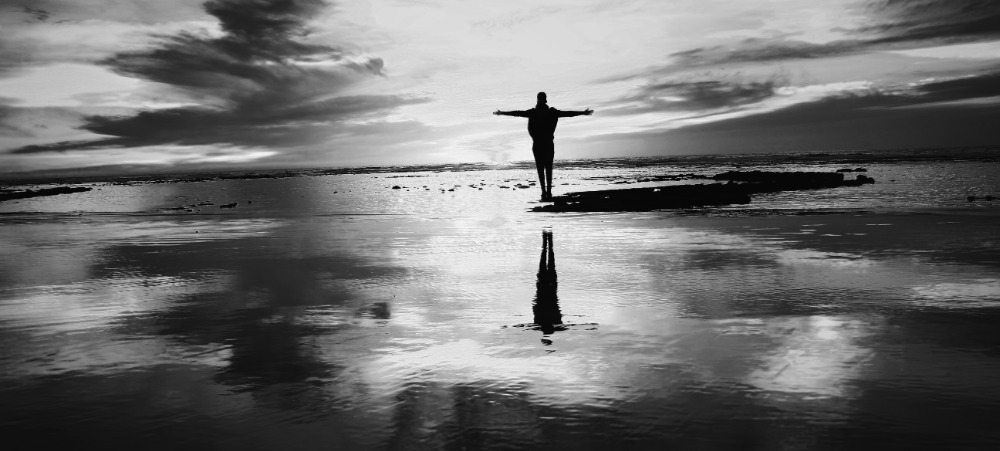 Can we reassess what healing actually means for ourselves? This can be a scary question. However, a deep and honest inquiry can reveal so much. You have a unique experience of healing, and so there is no need to look outward or compare yourself to others. When we consider that our efforts to heal matter so much and yet there is so much that we don’t have control over, we allow ourselves to relax more. We find that we don’t need to take ourselves so seriously. We may also find that our resolution to recover is empowered in a way that it can never be while we are fearfully hanging on and trying to manage every aspect of our inner and outer lives in order to “heal”. When we see that we don’t know what will come tomorrow, or if tomorrow will come at all, we open to the possibility of wonder, humility, and the willingness to look anew. We open to the direct experience of healing, health, and well-being.
Can we reassess what healing actually means for ourselves? This can be a scary question. However, a deep and honest inquiry can reveal so much. You have a unique experience of healing, and so there is no need to look outward or compare yourself to others. When we consider that our efforts to heal matter so much and yet there is so much that we don’t have control over, we allow ourselves to relax more. We find that we don’t need to take ourselves so seriously. We may also find that our resolution to recover is empowered in a way that it can never be while we are fearfully hanging on and trying to manage every aspect of our inner and outer lives in order to “heal”. When we see that we don’t know what will come tomorrow, or if tomorrow will come at all, we open to the possibility of wonder, humility, and the willingness to look anew. We open to the direct experience of healing, health, and well-being.
.
What does this insight tell us about healing? Often, we hear that we need to hit rock bottom in order to heal. We hear that we do a disservice to ourselves, or to the one struggling with addiction, by preventing this bottoming out. However, does this really mean we need to let everything fall apart before we can start to heal and climb out of the pit we have dug ourselves into? What if hitting bottom points more to an attitude than a fixed event? What if healing was more of an innate quality of our awareness than a fixed state that we achieve? One aspect of this healing quality of awareness is that it can see how we are in control in certain ways and yet not at all in even more ways—that we are changing and growing processes. 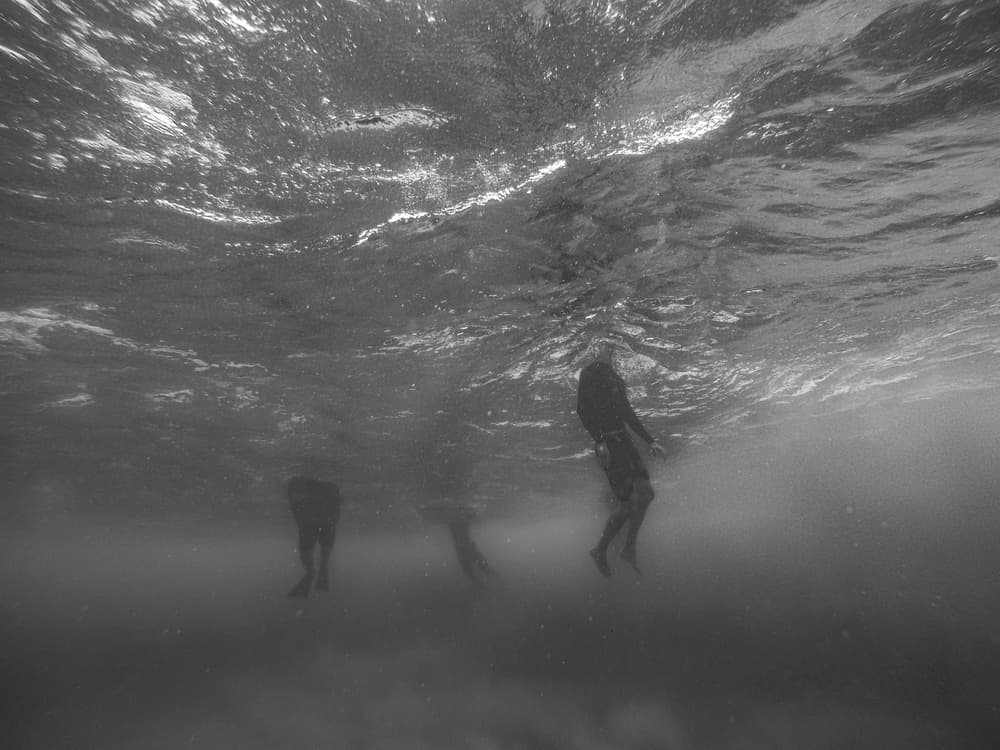 Our contact with this healing quality of awareness seems to come about through a certain kind of dying. When we hit bottom (which does not need to be a literal bottom), we realize that all of our strategies, attempts, and maneuvers to not hurt so much have failed miserably. With this recognition, you may feel that you are submerged and swimming in emotion. You may find yourself struggling to breathe but at the same time watching everything simply unfold—looking sometimes like a movie and sometimes like a train wreck. You realize in these moments that although you are at the bottom of the barrel, it is just where you belong. You realize that there isn’t much to do besides simply see and be there totally.
Our contact with this healing quality of awareness seems to come about through a certain kind of dying. When we hit bottom (which does not need to be a literal bottom), we realize that all of our strategies, attempts, and maneuvers to not hurt so much have failed miserably. With this recognition, you may feel that you are submerged and swimming in emotion. You may find yourself struggling to breathe but at the same time watching everything simply unfold—looking sometimes like a movie and sometimes like a train wreck. You realize in these moments that although you are at the bottom of the barrel, it is just where you belong. You realize that there isn’t much to do besides simply see and be there totally.  To be totally out of options. Perhaps the most sincere place one can ever be. From this place strength emerges. From this place, we may begin to act and make decisions that are not wholly based on escaping this moment. We may realize there is nothing we can ever escape, and that the kindest thing we can do for ourselves is to simply be here with and in whatever arises. This is a humbling process. This is the process and experience of healing. Through finally meeting our inner experiences with honesty and love, we may notice a sense of ourselves that is deeper than any story, emotion, or thought that we may be having. We may notice whether the part that has let go has opened up space for recognizing what has always been here. And once opened, the connection with the presence of this moment, a deeper aspect of who we are, always remains. It is this aspect of ourselves that is innately healing. When we are in touch with this quality of awareness, we can see that even difficulty, shame, fear, and guilt are alright. This means that healing is not dependent on the absence of craving or difficulty. In fact, it is the only place where we can be genuinely intimate with craving and difficulty. This is one of the gifts of addiction. To continue living, addiction pushes us to a point where we have no other option than to consciously connect with the life currents of healing and wellness within ourselves. When you are connected with the healing qualities of awareness, you are also connected with presence—the essence of this present moment—and you may realize that this is the only space that healing can ever occur and also the only place where—in a way—you feel already healed and at peace by simply being.
To be totally out of options. Perhaps the most sincere place one can ever be. From this place strength emerges. From this place, we may begin to act and make decisions that are not wholly based on escaping this moment. We may realize there is nothing we can ever escape, and that the kindest thing we can do for ourselves is to simply be here with and in whatever arises. This is a humbling process. This is the process and experience of healing. Through finally meeting our inner experiences with honesty and love, we may notice a sense of ourselves that is deeper than any story, emotion, or thought that we may be having. We may notice whether the part that has let go has opened up space for recognizing what has always been here. And once opened, the connection with the presence of this moment, a deeper aspect of who we are, always remains. It is this aspect of ourselves that is innately healing. When we are in touch with this quality of awareness, we can see that even difficulty, shame, fear, and guilt are alright. This means that healing is not dependent on the absence of craving or difficulty. In fact, it is the only place where we can be genuinely intimate with craving and difficulty. This is one of the gifts of addiction. To continue living, addiction pushes us to a point where we have no other option than to consciously connect with the life currents of healing and wellness within ourselves. When you are connected with the healing qualities of awareness, you are also connected with presence—the essence of this present moment—and you may realize that this is the only space that healing can ever occur and also the only place where—in a way—you feel already healed and at peace by simply being.
.
Our intentions and actions matter so much. This is evident in how children respond to their parents’ efforts to be kinder, and more nourishing. Yet at the same time, we are just one small part of life that has very little control over our outcomes. We are just one part and process of a larger collection of energetic processes that we are held within. 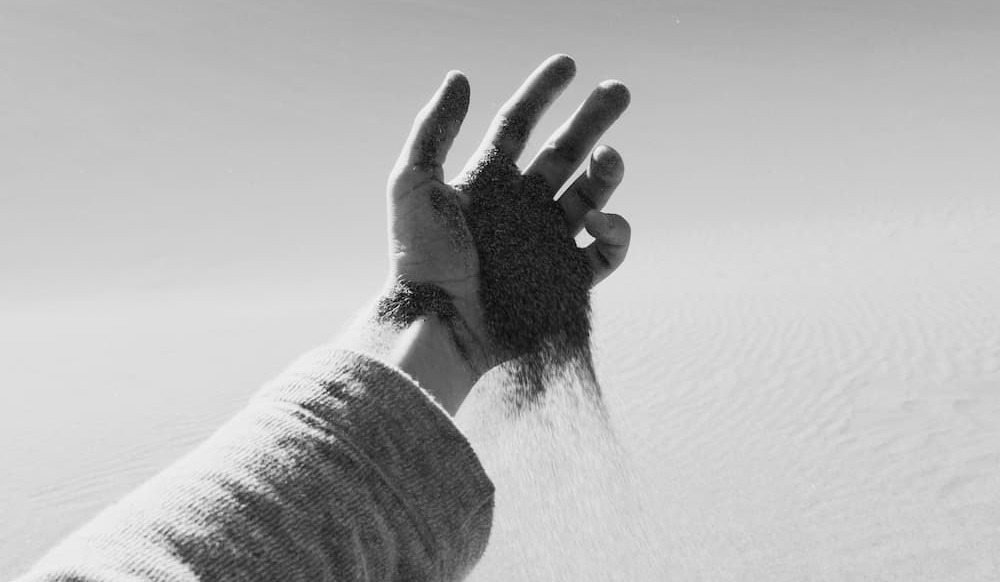
Do you make your heart beat?
Do you move the breath in and out of your body?
Thank goodness we are not in control of everything. How limiting the experience of life would be if we needed to consciously beat our heart. Could we even do it? A friend once said to me, “With our attention spans, we would probably forget or get distracted, and that would be the end of it!” What a mystery this process of life is! If we look outside ourselves, we see that the processes of healing and growth are intimately intertwined with the processes of destruction. Could it be any other way inside this human body and mind? Aren’t we connected to life in the same way that a plant is? Destruction often clears the way for something new to emerge. New seedlings grow from the rot of dead and decaying, once majestic and kingly trees. Let us not be too hasty to judge our “failures” and “setbacks,” for we don’t know what fertilizer they might serve as for some new seed of wellness. In fact, we can be certain that in the wake of destruction, new life will grow. We just don’t know how, when, or what form our own life trajectories will take. With this in mind, is it possible to simply enjoy the processes of life and death that we are intertwined with, and connect the best we can with the unique currents of healing and wellness within us?
The Heart of Addiction and its Recovery
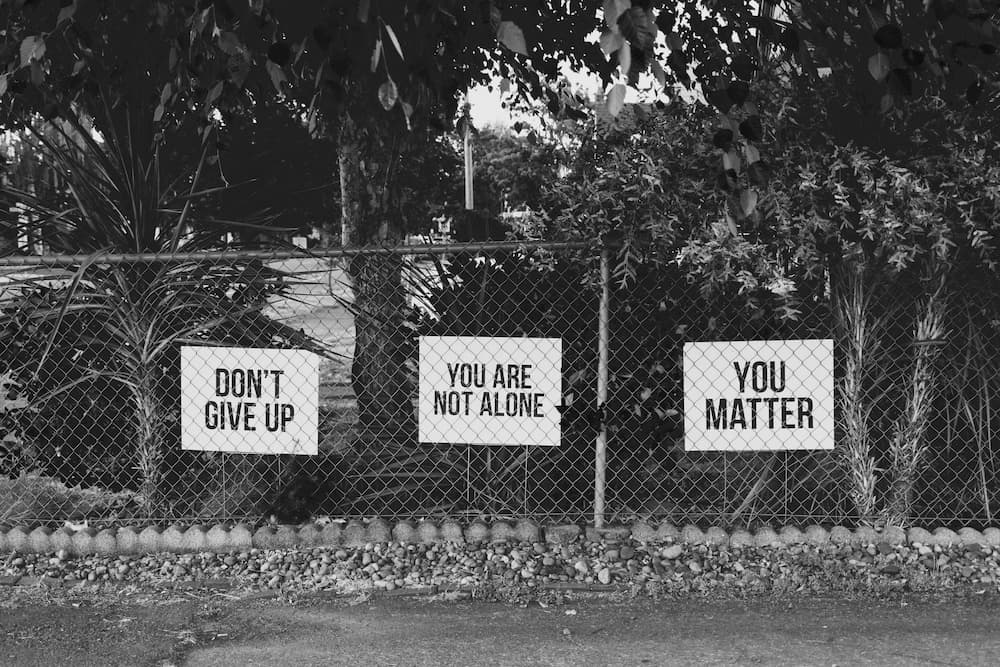 Addiction—as unseen resistance to what is—is always connected with this moment and everything happening in it. It disappears just as soon as it emerges. It is always speaking in new, never before heard words. Recovery from addiction is about opening to the wonder of this very moment. When we are present to the energy of addiction in this way, we may make a great discovery. We may discover that the natural life energy of addiction is inseparable from our own life energy—which may be felt as wonder and a sense of aliveness. In this way, as addiction is seen to be a natural, unconscious process of resistance, recovery is seen to be a process as well. Recovery is revealed as a loving, moment-by-moment, embrace of resistance. We do not need to wait years to feel better. Health, healing, and the peace we yearn for are in large part the life-blood of this moment. This is true even if craving and discomfort are present.
Addiction—as unseen resistance to what is—is always connected with this moment and everything happening in it. It disappears just as soon as it emerges. It is always speaking in new, never before heard words. Recovery from addiction is about opening to the wonder of this very moment. When we are present to the energy of addiction in this way, we may make a great discovery. We may discover that the natural life energy of addiction is inseparable from our own life energy—which may be felt as wonder and a sense of aliveness. In this way, as addiction is seen to be a natural, unconscious process of resistance, recovery is seen to be a process as well. Recovery is revealed as a loving, moment-by-moment, embrace of resistance. We do not need to wait years to feel better. Health, healing, and the peace we yearn for are in large part the life-blood of this moment. This is true even if craving and discomfort are present. 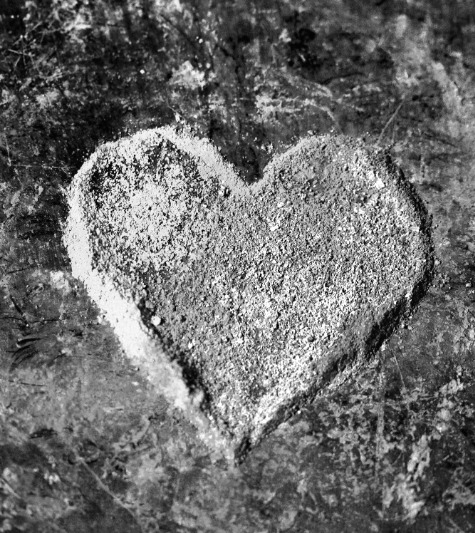 Awakening to the presence of resistance in this way does not mean that resistance will necessarily disappear. This is particularly important to contemplate if your inquiry into addiction reaches outwards to include social expressions of addiction. When we inquire into social expressions of addiction such as racism, patriarchy, hyper consumerism, etc., the resistance of the pattern does not dissipate at the same rate as our more individual addictions. There is a lot of momentum to social and collective addictive patterns. However, whether we are encountering individual or social forms of addiction, the momentum of these patterns of resistance does not obscure our felt connection with the qualities of healing and peace within. In the moment that you become viscerally aware of resistance as an experience of habitual clenching rather than as the basis of who you are, you also see that resistance is not a problem. You transform addiction by seeing that it is a natural pattern of life. The moment this is seen, the emergence of addictive energy no longer divides you or your life into separate things. While distinctions of course still remain, when this moment is not being divided into essentially separate pieces, is there anything really that requires numbing? Through moment-by-moment living inquiry into addiction, you realize who you are on a more fundamental level. In doing so, you also play an important role in disrupting individual and social patterns of addiction. At the same time, you feel connected with the peace of presence, even if certain aspects of your life situation still carry the residue, momentum, and discomfort of old patterns of tension and pain.
Awakening to the presence of resistance in this way does not mean that resistance will necessarily disappear. This is particularly important to contemplate if your inquiry into addiction reaches outwards to include social expressions of addiction. When we inquire into social expressions of addiction such as racism, patriarchy, hyper consumerism, etc., the resistance of the pattern does not dissipate at the same rate as our more individual addictions. There is a lot of momentum to social and collective addictive patterns. However, whether we are encountering individual or social forms of addiction, the momentum of these patterns of resistance does not obscure our felt connection with the qualities of healing and peace within. In the moment that you become viscerally aware of resistance as an experience of habitual clenching rather than as the basis of who you are, you also see that resistance is not a problem. You transform addiction by seeing that it is a natural pattern of life. The moment this is seen, the emergence of addictive energy no longer divides you or your life into separate things. While distinctions of course still remain, when this moment is not being divided into essentially separate pieces, is there anything really that requires numbing? Through moment-by-moment living inquiry into addiction, you realize who you are on a more fundamental level. In doing so, you also play an important role in disrupting individual and social patterns of addiction. At the same time, you feel connected with the peace of presence, even if certain aspects of your life situation still carry the residue, momentum, and discomfort of old patterns of tension and pain.
.
Let us continue to explore what our addictions are asking for. What are they pointing to? What have we disowned about ourselves that is asking to be seen? Let’s see if we can remain interested in discovering what healing looks like for us in this moment… and in this one. This process may be challenging, but know that it is a homecoming, and a process of growth. Yet, paradoxically, it is also about recognizing within you that which does not require growth. This full-blooded embodied intimacy with addiction and its healing is sacred. Can you dare to approach it with the attitude of reverence that it deserves?
ABOUT THE AUTHOR
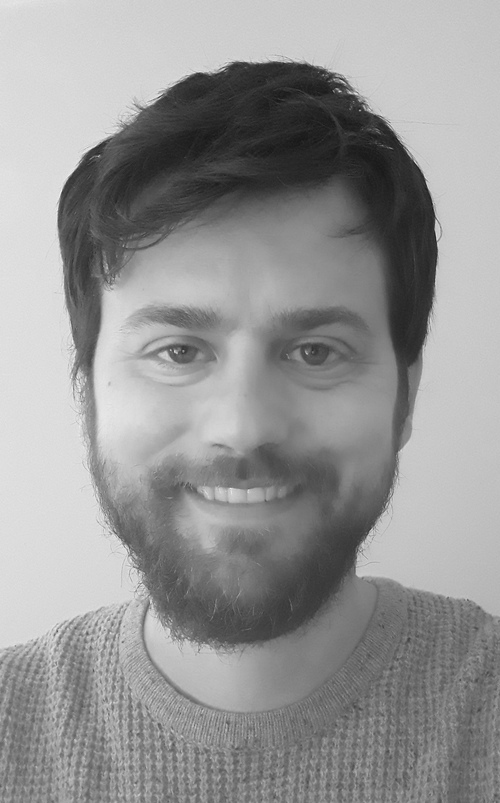 Victor Bucklew, PhD is a counselor-in-training, scientist, Mindfulness Based Stress Reduction facilitator, environmental activist, and person in long-term recovery from addiction. He received his PhD in Laser Physics from Cornell University, and currently researches the quantum mechanics of light. He is author of the three-time award winning book, The Hidden Gifts of Addiction: The Direct Path of Recovery. For more, please visit www.victorbucklew.com.
Victor Bucklew, PhD is a counselor-in-training, scientist, Mindfulness Based Stress Reduction facilitator, environmental activist, and person in long-term recovery from addiction. He received his PhD in Laser Physics from Cornell University, and currently researches the quantum mechanics of light. He is author of the three-time award winning book, The Hidden Gifts of Addiction: The Direct Path of Recovery. For more, please visit www.victorbucklew.com.
Posted by mkeane on Tuesday, July 27th, 2021 @ 5:00AM
Categories:
